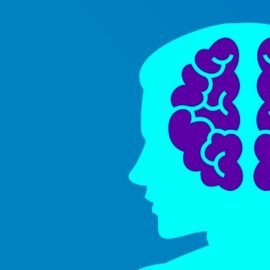
What are the common trauma responses known as the four Fs of trauma? How can these responses influence behavior?
The four Fs of trauma are fight, flight, freeze, and fawn, and each represents a way that someone might respond to trauma. Looking at each one can help you identify your own patterns of response to trauma.
Learn how to recognize each of these responses.
Trauma Responses: The Four Fs
One way to think about complex PTSD (CPTSD) is as a condition where someone’s gotten trapped in a trauma response. Trauma responses are defense mechanisms against danger, whether that danger is real or only perceived. It’s important to note that trauma responses are natural and (usually) healthy responses to danger—however, in the case of CPTSD, a person may perceive everything as dangerous and respond accordingly. The four Fs of trauma (fight, flight, freeze, and fawn) refer to types of trauma responses.
(Shortform note: People with PTSD and CPTSD become trapped in their trauma responses because they’re trapped in the memories of their traumatic experiences. This means that the survivor is reliving the experience over and over again, either cognitively (remembering the events) or emotionally (remembering how they felt back then). As a result, their brains and bodies respond as if they were still in that situation, leading to the ongoing trauma response.)
In this section, we’ll briefly discuss the four types of trauma response and how getting trapped in each type can influence a person’s behavior.
1. Fight: The person tries to directly confront and overcome the danger. Someone trapped in a fight response will often try to control everything around them through bullying or manipulation. They may seem overly aggressive and are prone to emotional outbursts when they don’t get their way.
2. Flight: The person tries to escape from the danger. Someone trapped in a flight response will try to escape from situations that feel dangerous or stressful. If they can’t physically leave the situation—for instance, if something stressful happens at work—they often try to mentally escape using methods like playing games, scrolling social media, or daydreaming.
3. Freeze: The person tries to avoid being noticed in hopes that the danger will pass them by. Someone trapped in a freeze response might try to avoid any situation that feels at all uncomfortable, leading to reclusive and asocial behavior.
4. Fawn: The person tries to stay safe by appeasing the source of the danger. Someone trapped in a fawn response shows codependent or people-pleasing behavior; they consistently put others’ needs and wants above their own.
(Shortform note: Exactly how many different “Fs” there are is a matter of ongoing discussion. The original, and most widely known, term to describe trauma responses is just two Fs: “fight or flight.” The four trauma responses presented here are the commonly accepted model today. However, some mental health professionals argue that there should be a fifth F: flop. A flop response is when somebody’s so overwhelmed by ongoing abuse or trauma that they completely give up; they’ll instinctively obey their abuser, but seem unable to think on their own. Sometimes they might also physically flop, going limp and falling to the ground in order to show that they’re completely submissive and nonthreatening.)
CPTSD is often misdiagnosed as various other psychiatric disorders—for example, a flight response might look like clinical anxiety or Attention Deficit Hyperactivity Disorder (ADHD), while a freeze response might look like depression. However, in the case of CPTSD, such behaviors are learned responses to stress and trauma rather than the results of a chemical imbalance in the brain.
(Shortform note: When conditions have overlapping symptoms like described here, doctors will often perform a differential diagnosis to figure out which condition their patient is suffering from. In brief, a differential diagnosis means that the provider makes a list of conditions that could explain the patient’s symptoms, then runs tests to narrow down the list until they’re able to make a diagnosis.)







Is this for replying to the four f, short form?